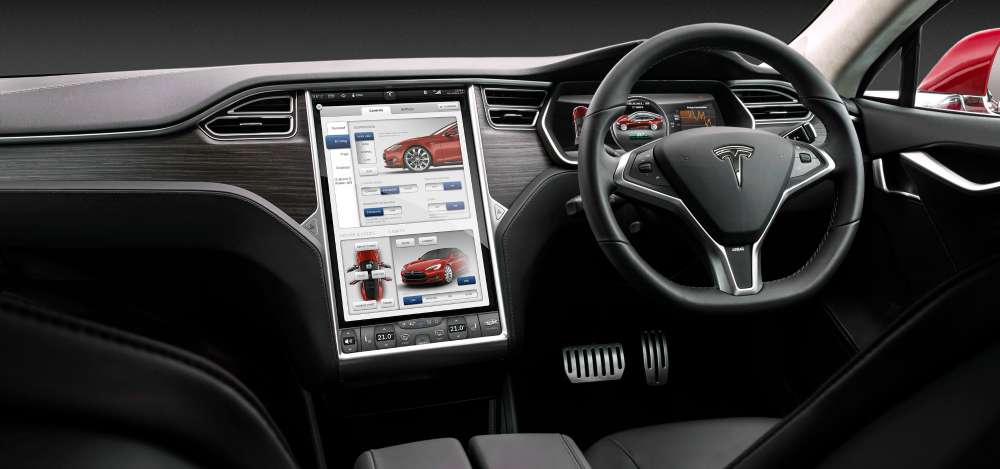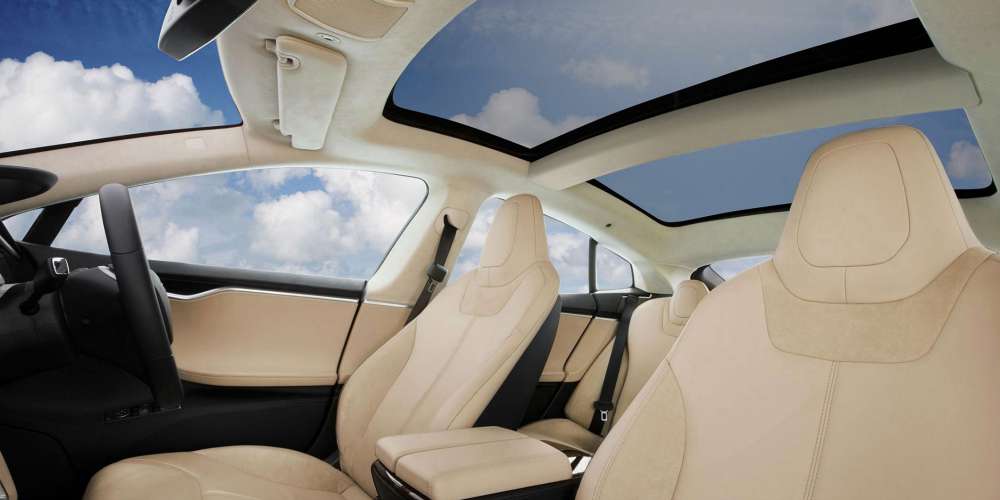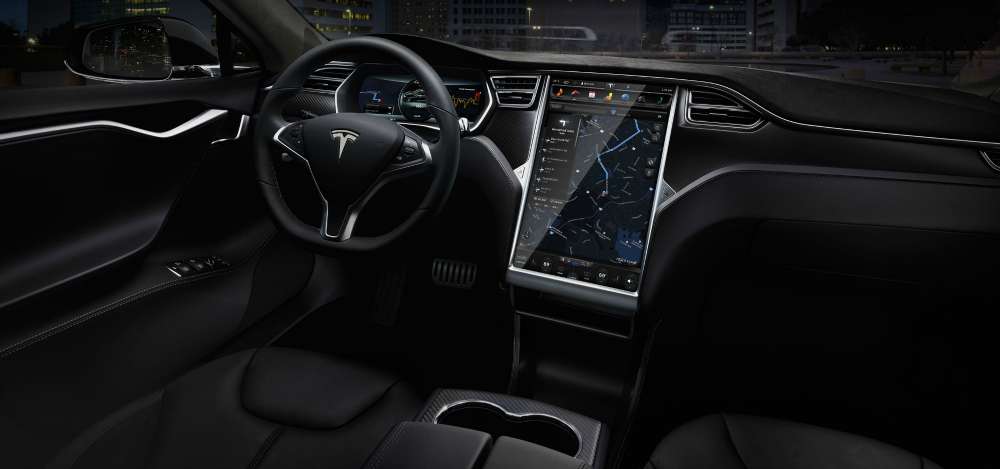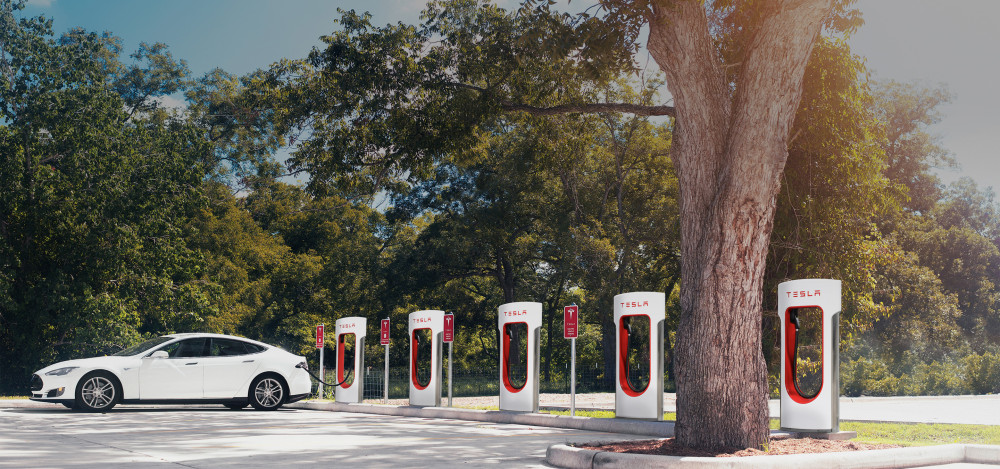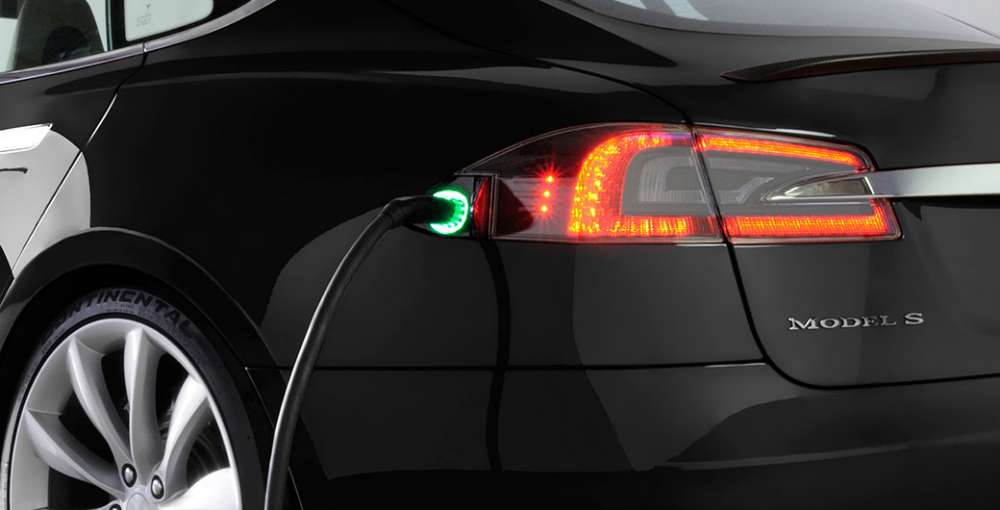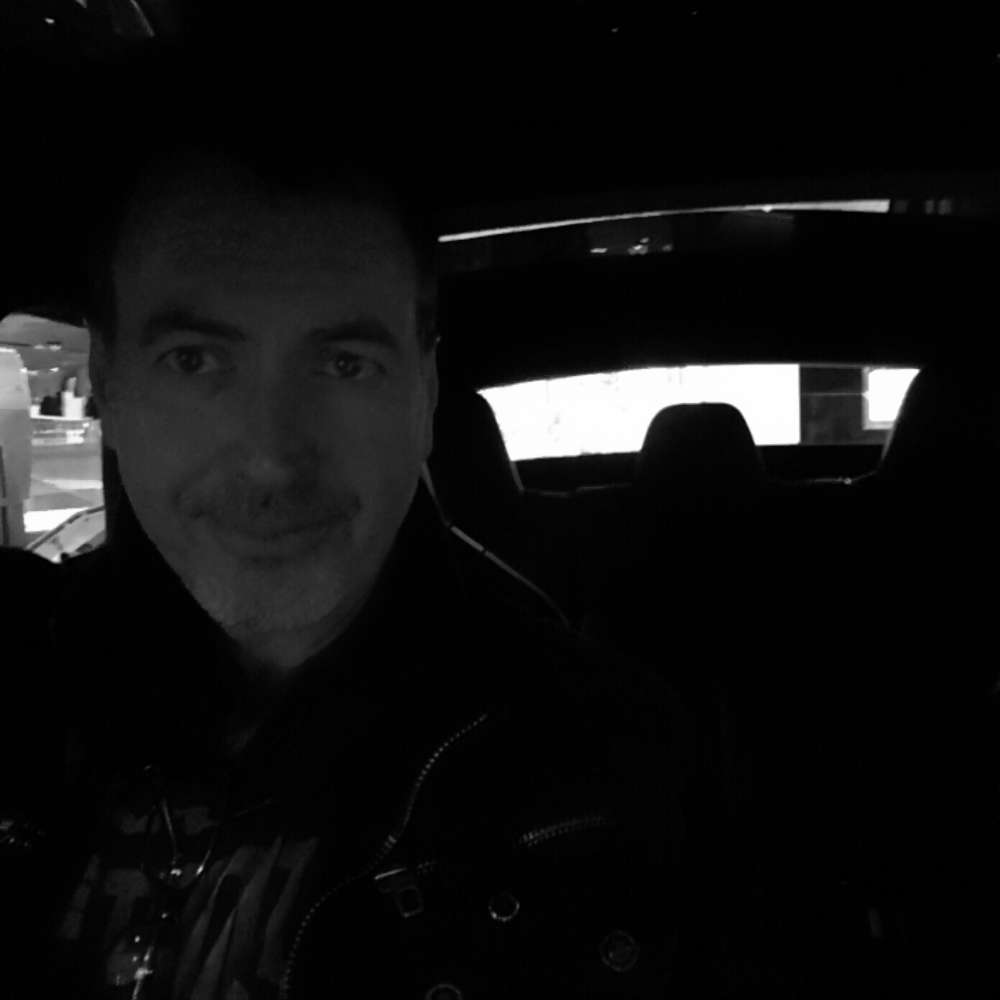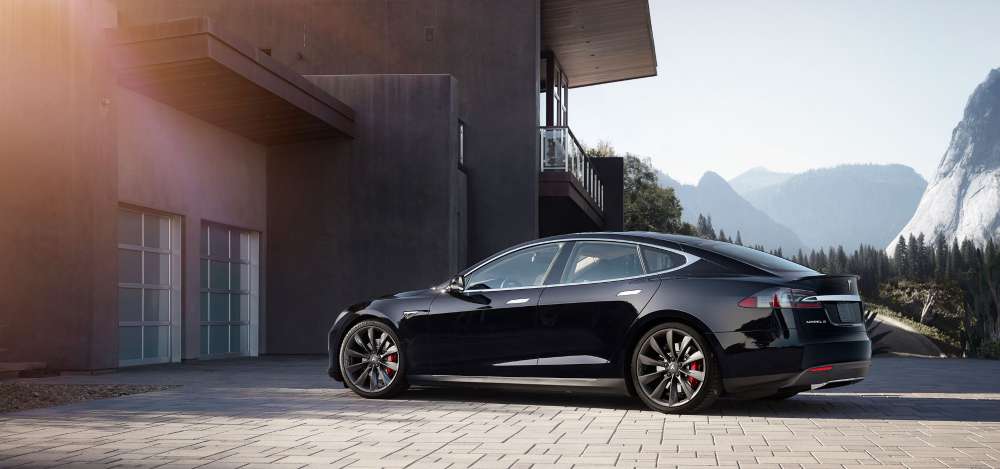
Pitch your Startup, App or Hardware or post a Startup Event or Startup Job
A couple of weeks back, on the occasion of my daughter’s impending birthday, I was wandering through Westfield Plaza in the city on a shopping expedition. Already dulled senseless by Zara, Seed, & Bardot Junior I was greatly relieved to find a Tesla Motors’ Model S on display right in the middle of the mall. I sent my daughter on her way to the next shop and told her where to find me when she was done.
Sitting in the Tesla I was immediately impressed with the user interface and classy interior of the car. So when asked by the marketing budgie if I wanted to book a test drive, I of course answered in the affirmative.
Now I don’t drive much these days. For years now I have been cycling to work and also in and around town for social occasions; one of the privileges of living near the CBD. Indeed I no longer own a car because at some point I realised that the true cost of car ownership was equivalent to 2-3 cab rides a day even given the exaggerated taxi fares that we have here in Australia.
The truth is that my decision to go car-less had nothing to do with cost and everything to do with the fact that driving around Sydney is just about the only activity which can make me lose my nut. It’s a combination of factors that gets under my skin; traffic that hardly moves, drivers that are stuck on 40 km/h because they can’t be arsed reading the speed limit signs, cameras and cops at every corner waiting for the next horrendous misdemeanour (oh, a whole 5 km/h over the speed limit, you evil person!), no available parking, and parking with ridiculously painful payment methods and prices.
To make matters worse I can recall a former era when driving was easily the most efficient form of transport in Sydney. I remember a time in my late teens when I drove from Pyrmont to Bondi for a surf without once stopping. Can you imagine?
The only cars that I get to drive these days are GoGets and rental cars when travelling for business. This allows me to experience many different types of cars. Add these experiences to a lifelong interest in both the business and technology of cars and you might say that I am somewhat of a trainspotter when it comes to matters automotive. Ironic this, given that I don’t own a car.
Anyone that has a passing interest in cars will have been reading about Tesla Motors for many years now. I had even seen their cars when they were first released in Silicon Valley; some venture capital colleagues had of course lined up to buy the first batch. But due to sheer chance, prior to my recent test drive, I have never before had an opportunity to drive one or even be a passenger in one.
And to be honest I just assumed that the Silicon Valley venture types were being wankers when they waxed lyrical about the things. Of course they would say nice things because Tesla Motors was a child of Silicon Valley and also because these guys always drink their own collective Kool Aid. It’s their number one job skill in fact. This, combined with the fact that Tesla Motors derives from the USA (more on this below) had caused me to file their cars in my TBD* folio (*most likely crap).
This confidence in matters automotive probably derives from the fact that I grew up in a car mad family. A Ford family to be exact, in an era when there was just three choices; Ford, Holden and Valiant (which was reserved for the eccentrics, the wogs and, unfortunately, me for my first car purchase). By way of example, the Bathurst car race was a religious event at our house. Starting early one October weekend morning it was the one day of the year when no other activity was allowed. The males of the family would be glued to the couch for the whole 500 miles. The same male collective would spend any car trip commenting on each and every car of note that passed our vision.
With this start in life it’s no surprise that I have a strong interest in cars. But another reason that cars appeal to me is that they combine my three professional interests – design, technology and business. In fact there is far more ’embedded’ technology per inch in a car than there is in any other product on the planet, including Intel’s CPUs. After 150 years of continual development and trillions of dollars of collective and cumulative global R&D it is possible today to buy a new car for as low as $12,000. But unlike many other products, cars have these two wonderful R&D constraints that appeal to the professional product developer in me – the cost restrictions inherent in high volume manufacturing, and design; both of which must be optimised within technology constraints in order for the product to be successful.
There was a time when the Americans led the world in car design and engineering. That sort of stopped somewhere in the 1950s when the insular American market got shanghaied by corporate types intent on selling flashy large dinosaurs for profit. The Germans and the Japanese saw the opportunity and developed much better cars for export, which they are still doing to this day.
The poor corporate management of the American automotive industry must have started believing that cars sell solely on price and size, or through a great big distribution channel and lots of marketing, whereas they really sell on brand perception, all-round performance and design. Customers generally have a budget and within that budget they will select the car that they perceive is the most desirable brand, has the most amenable user experience, and that also has the best design or the least objectionable design.
It’s hard enough to manage the design process for any type of consumer product development but for car makers to get it right the decision making process around design has to be supported by management that understands the importance of great design and can recognise it, but not try to run it. That sort of right brain thinking just doesn’t normally come with the left brain requirements required for climbing the corporate ladder of a large American automotive company.
For all of these reasons and for as long as I can remember American cars have pretty much been considered to be agricultural and not terribly desired by the sane. Over the last decade we have seen some American models making inroads back into the Australian market, especially Jeep with their range of SUVs. But even so there are not many souls who place American designed and made cars at the top of their shopping list.
If we were to be honest with ourselves, the American-owned Australian icons, the Falcon and the Commodore/Kingswood, were also built to a low cost point and always a couple of generations behind the latest technologies. Which is why the Japanese and Germans and, more lately, the Koreans have eaten their lunch; these guys have been importing better cars that offer much better value propositions. And the punters have voted with their feet. The Falcon is finally going to the great automotive cemetery in the sky and let’s hope the Commodore follows. I for one will rejoice when I get into my last smelly, rattly Falcon cab. Was there ever a car less suited to the task?
Oddly enough my brother is looking forward to the upcoming Australian release of the Ford Mustang, primarily because he used to watch Allan Moffett race one as a kid and has always had this dream of owning one. In 2015 one can finally buy a Mustang with some sort of multilink independent rear suspension, almost 35 years after Mercedes Benz introduced this technology in the 190E of the day. That’s how far behind the Americans are when it comes to matter automotive.
Intuitively I had placed Tesla Motors in the same bucket as their elder brethren at Ford, GM and Chrysler. That is, from a country incapable of great automotive design and execution. And certainly incapable of great automotive technology. How wrong was I?
I don’t know where to start in singing the praises of Tesla Motors. So I will start in the least obvious place – sales. Prices are advertised online. Option prices are listed. There are no hidden costs and you can order your car online. They own all of their own stores and don’t use distributors. When I was in my twenties I worked at a pub on Parramatta Road where all the car salesmen used to retire after a hard day’s fleecing. The stories they told are indelibly etched in my mind and as a result I have never bought a car in any sales yard, new or used. Tesla Motors seems to have caught onto this distaste and reengineered the customer experience into the 21st century. And all power to them for it.
Yet, and I should mention this, they still do trade-ins. Trade-in pricing is a form of what Douglas Adams called Bistromathics; essentially there is no logic to trade-in pricing and if you attempt to figure it out you will go mad. No matter what deal is being offered a customer always feels ripped off because of the obvious gap between private sales prices and the trade-in offer. My advice to any car company wishing to make it easy for customers to swap a used car (plus cash or debt) for a new car is to sell the used car on commission on behalf of the customer and only take a fixed percentage fee of the sales price. This way the customer would not feel so gamed.
At Tesla Motors’ sales headquarters in Sydney they have an example of the chassis and drivetrain of their cars. I took a photo for those of you that haven’t seen it before. The compactness of the skateboard-like guts of the Tesla is remarkable. No gearboxes and one or two tiny electric motors depending on how much power you want. The batteries are hidden under the passenger floor with all that weight down nice and low for good driving dynamics. With a chassis and drivetrain like this it’s pretty clear that Tesla Motors could put any vehicle they wanted on this skateboard, and indeed they are now floating around an SUV concept vehicle. As their development budget allows I would expect them to fill every vehicle category (and there are now dozens of sub-niches exemplified by BMW’s maddening collection of models).
And then there is the driver interface. I won’t carry on much here but a good analogy to make is that of Nokia Symbian (being your normal car) and the iPhone (Tesla Motors). The controls on this car are startling good and different to your normal experience. Just about everything is controlled through the enormous touch screen, apart from the steering wheel controls and the voice controls, neither of which I played with. Even the rear view mirrors are effectively redundant because of the fantastically large and clear rear-view camera display. The Google maps display is so big that it is actually useful.
One feature I love is that you are always shown the current speed limit. This is useful for folks like me that don’t believe that our constitution includes a clause making the reading of every sign a compulsory activity.
I asked if I could use that speed limit information to set a speed governing function so that I would never incur a speeding fine. Apparently not as yet. But my sales guys suggested that this might come in a future over-the-air software upgrade. And this is one of the technical features of the Tesla you have to get comfortable with; there’s a lot of software between you and the road. Some part of me still prefers old-school direct mechanical systems which are not susceptible to being fatally screwed by bugs. However all Tesla Motors has done is go to the endpoint on day one whereas most other car makers are still using hybrid mechanical and software controlled features. Let’s just hope that their software testing is sufficiently high-class or that someone else finds the terminal bugs.
The car has lane identification technology and smart cruise control which slows the car down when there is a slower car ahead in the lane. Apparently these features combined allow you to take your hands off the steering wheel whilst cruising down the Hume Highway. I can assure you this is one feature that I would never test. But I can imagine Gen Y’s giving it a go; they seem to trust that the world is the very safe place that it is advertised to be. And it would give them more time for social media.
The Tesla has gas shocks that can be raised to go over steep kerbs. In my last car (a certain German thingy) I was forever scraping the front plastic and ended up simply not driving places where I thought I might do further damage. In the Tesla, once you have raised the car at a certain position this is recorded by GPS and the car always raises itself when you get the near the same spot. Simple really, and it is little features like that which makes this such a special car.
And how does it drive? Smoothly and quietly and with plenty of grunt. Way too much grunt in fact unless you live in the Northern Territory (where the idea of an electric car would be beyond silly). While I am on the subject, open speed limits were abolished by the Northern Territory Government in 2006 and replaced by a maximum limit of 130 km/h. More people died on Territory roads (307) in the six years after the change than in the six years before (292) when speed limits were not restricted. Seriously folks, driving down the Hume Highway at 110 km/h is a recipe for boredom and inattention unless you can take your hands of the wheel and have a snooze.
Despite that fact that we live in a Nanny State (that term is a bit harsh on Nannies me-thinks; it’s more like the Mum & Dad State) where any speed over 110 km/h is considered to lead to instant death, most car folks can’t help themselves. They like the idea of a car that can get to 100 km/h in 3 seconds and has a top speed of 250 km/h. This desire comes from the same part of the brain that lusts after a diving watch that can go down to 1000 feet and survive inter-stellar radiation; that is, the part of the neocortex that drives one to have more money than sense and a leaning towards caring about the perceptions of oneself by like-minded insecure folks. On such psychologies are all luxury products sold.
The biggest part of the sales pitch was of course ‘range’. Unlike a hydrocarbon-powered car this thing takes hours to recharge, subject to the specifications of the source of power. Tesla Motors has DC charging stations which they are rolling out up and down the East Coast. But even these only provide 270 km of range for half an hour’s worth of charging. The home charger they provide will give you less than a 100 km for each hour of charging. So realistically the use of Tesla’s cars is limited to round trips of less than the maximum range of somewhere between 300-500 km (subject to how hard the car is driven), or a one way trip of the same distance with an overnight stop. The primary reason that this car is selling though is that the people that buy it only use it for city commuting.
Tesla Motors do make a point of saying that electricity is much cheaper than fuel. True as that is, you could buy a fleet of Suzuki Alto hatchbacks and run them on petrol and still have money in your pocket compared to purchasing a single Tesla. The people that buy these things aren’t going to be swayed by the cost savings, if you know what I mean.
However, the price of Tesla Motors’ cars is on par or even cheaper than similar quality sports sedans. Product positioning at the luxury end of the market is really subjective and the truth is that pricing is a matter of what a car maker can get away with and still hit target volumes or revenue figures. And that is entirely down to marketing and brand perception.
To my eye, Tesla Motors’ cars look as good as the best of them with a design aesthetic shared with the Jaguar XF, the Aston Martin Rapide, the Porsche Panamera and many other four door sports cars that can do 250 km/h (if only they weren’t registered in Australia). That’s not surprising because the design constraints are exactly the same; safety, low coefficient of drag, four people, sports car etc. My favourite design feature on the Tesla is the exterior door handles that retract when in motion. Another is the charging cap which is hidden behind the tail light; thus there is no ugly filler cap ruining the rear quarter of the car’s design. This thing is very well designed.
Tesla Motors’ cars come with the added benefit of ‘green’ social credits. On my test drive we were forced to wind down the window by an elderly Chinese-Australian gent in a Toyota hybrid. He wanted to know if the Tesla was electric and, once confirmed, he gave us a very cheery thumbs up. Case closed apparently.
But beware the noddy-level thinking of the masses; a careful analysis of the carbon footprint of Tesla’s cars, which takes into account all the carbon impacts made during the manufacturing of the car and its components, and spread out over the likely useful service life, shows that the Tesla is pretty much on par with most other cars with respect to carbon footprint. This uncomfortable truth is probably a little complex and won’t deter the buying public. One other green benefit of the electric car is that there is no pollution generated at the point of driving. The pollution is all back at the electricity generator and that is good for our city lungs. Indeed Tesla Motors is now promoting a solar charging system to even further improve their green credentials.
Another ‘social’ selling point of Tesla Motors was Elon Musk’s recent announcement that ‘Tesla will not initiate patent lawsuits against anyone who, in good faith, wants to use our technology.’ This well publicised act got the chattering classes all excited about the generosity of spirit at Tesla. In this context, a couple of conferences back I was chatting to the global head of Intellectual Property at Hyundai who explained to me that, although car companies have zillion of patents, they don’t enforce them against each other. Given this lack of enforcement, when pressed as to why they have patents at all, he answered that (and this is paraphrasing) it’s a Mutually Assured Destruction (MAD) strategy just in case anyone breaks the unwritten rules of the club. In addition the patents work to document their ‘prior art’ in the instance that a small company or a patent troll goes after them; this documented prior art can be used to invalidate many patents. If Tesla Motors ever decided to attempt to enforce their patents against the big guys they would very likely find themselves the subject of a shit-storm of patent enforcement cases. So the so-called generosity of Tesla Motors in this regards shouldn’t be taken too seriously by all you consumers.
In summary, there are many, many reasons why Australian car buyers should consider the cars from Tesla Motors. My suspicion is that they will be quite successful in Australia. I am sure they will also slowly and surely improve the driving range and decrease the charging times, thus attracting more customers. The platform may be licensed to other brands and we may see more reasonably priced electric cars running around with Tesla’s technology. Of course the incumbent auto-makers also have hybrid and electric cars in their portfolio but I can’t help but think that they are too wedded to their hydrocarbon past to put the effort needed into the electric car infrastructure. Tesla Motors is the automaker that is currently installing charger stations between Sydney, Melbourne and Brisbane. They have to – it’s their only business. And for this reason alone I suspect they will stay ahead in the race towards electric cars.
Back to the USA. They do say that the darkest day is just before dawn. As the incumbent US automakers became more and more morbid an opportunity for change emerged. Combined with the rare opportunity of a complete platform technology shift from liquid fuel to electricity, this has enabled a Silicon Valley technology company to jump into this high-tech commodity business (which is surely one of the biggest challenges in all of the business world). They have shown just how good that Americans can be when their best minds and access to excessive risk capital can be combined with serious intent to disintermediate a very old-school industry. All power to them too; we in Australia cannot but admire from afar.
And finally, would I buy a car from Tesla Motors? No, but only because I don’t want a car. Having said that if a gun was put to my head and budget wasn’t an issue the Tesla would be first pick, hands down. It’s that good.
Pitch your Startup, App or Hardware or post a Startup Event or Startup Job
